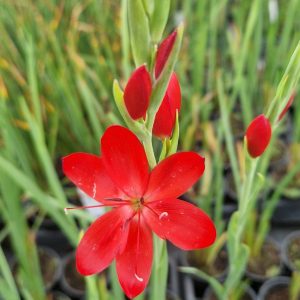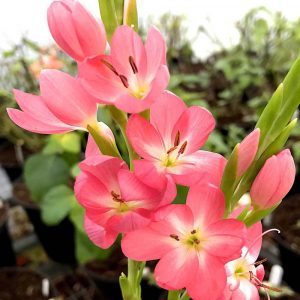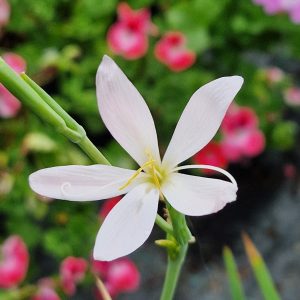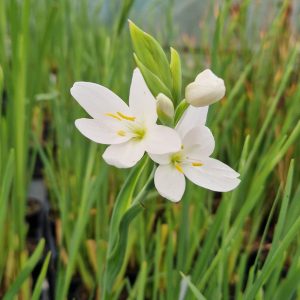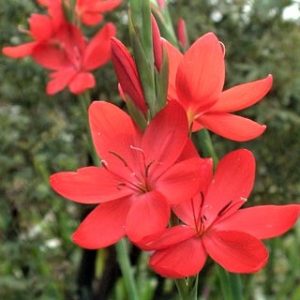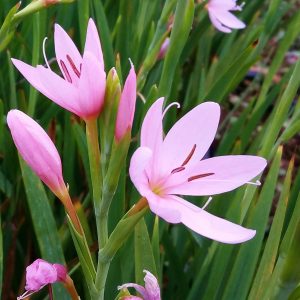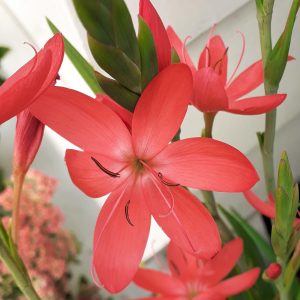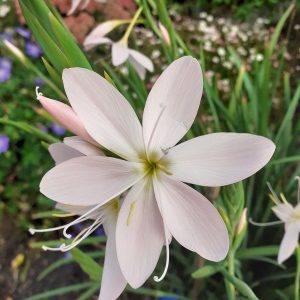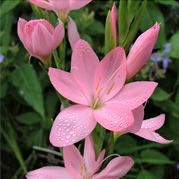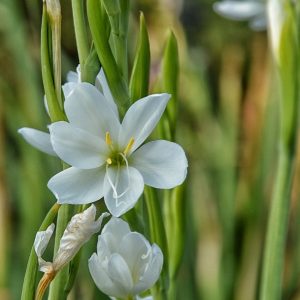Hesperantha, also known as the River Lily or Schizostylis, is a charming perennial known for its graceful flowers. Follow this comprehensive planting guide to ensure the successful establishment and continuous blooming of your Hesperantha plants.
Site Selection
Sunlight Requirements: Plant Hesperantha in a location that receives full to partial sunlight. These plants thrive in bright, indirect light.
Soil Quality: Choose well-draining soil enriched with organic matter. Hesperantha prefers slightly acidic to neutral soil pH.
Planting Time
Late Summer to Early Autumn: Plant Hesperantha corms in late summer to early autumn. This timing allows the plants to establish roots before the onset of winter.
Planting Process
Corm Depth: Plant corms approximately 2 to 3 inches deep in the soil. Space them about 6 to 12 inches apart, depending on the variety.
Soak Corms: Before planting, soak the corms in water for a few hours. This encourages hydration and kick-starts the growth process.
Watering
Regular Watering: Keep the soil consistently moist, especially during the growing season. However, avoid waterlogging, as Hesperantha doesn’t tolerate soggy conditions.
Mulching
Mulch Application: Apply a layer of organic mulch around the base of Hesperantha plants. Mulch helps retain soil moisture, suppress weeds, and insulate the corms during winter.
Fertilisation
Moderate Feeding: Apply a balanced, slow-release fertiliser in the spring as new growth appears. Avoid excessive fertilisation to prevent leggy growth.
Pruning
Deadheading: Remove spent flowers regularly to encourage continuous blooming. Trim back foliage in late autumn to tidy up the plants.
Winter Care
Mulch Protection: In colder climates, provide a thicker layer of mulch around Hesperantha plants in late autumn to protect them from winter frost.
Division
Every Few Years: Hesperantha can become crowded over time. Consider dividing clumps every few years to rejuvenate the plants. Division is best done in early spring or late autumn.
Support:
Staking: Tall varieties may benefit from staking, especially in windy conditions. Use discreet stakes to support the stems without overshadowing the plant’s natural beauty.
Pest and Disease Management
Pest Monitoring: Keep an eye out for pests such as aphids or spider mites. Treat promptly if detected.
Good Air Circulation: Ensure good air circulation around plants to reduce the risk of fungal diseases.
Enjoy the Blooms
Blooming Season: Revel in the profusion of delicate, six-petaled flowers that Hesperantha produces from late summer to autumn.
By following this planting guide, you’ll create an optimal environment for your Hesperantha plants to thrive. Customise care based on your local conditions and the specific variety you’ve chosen.



